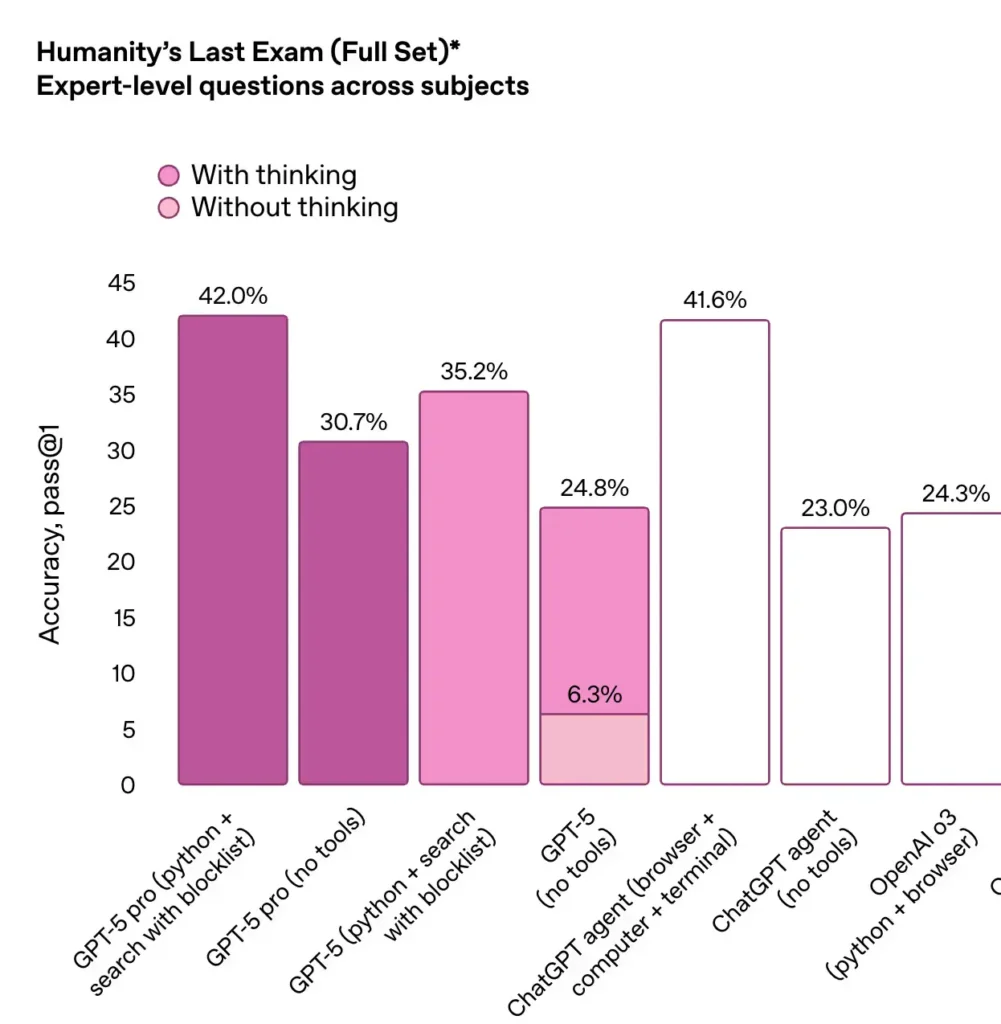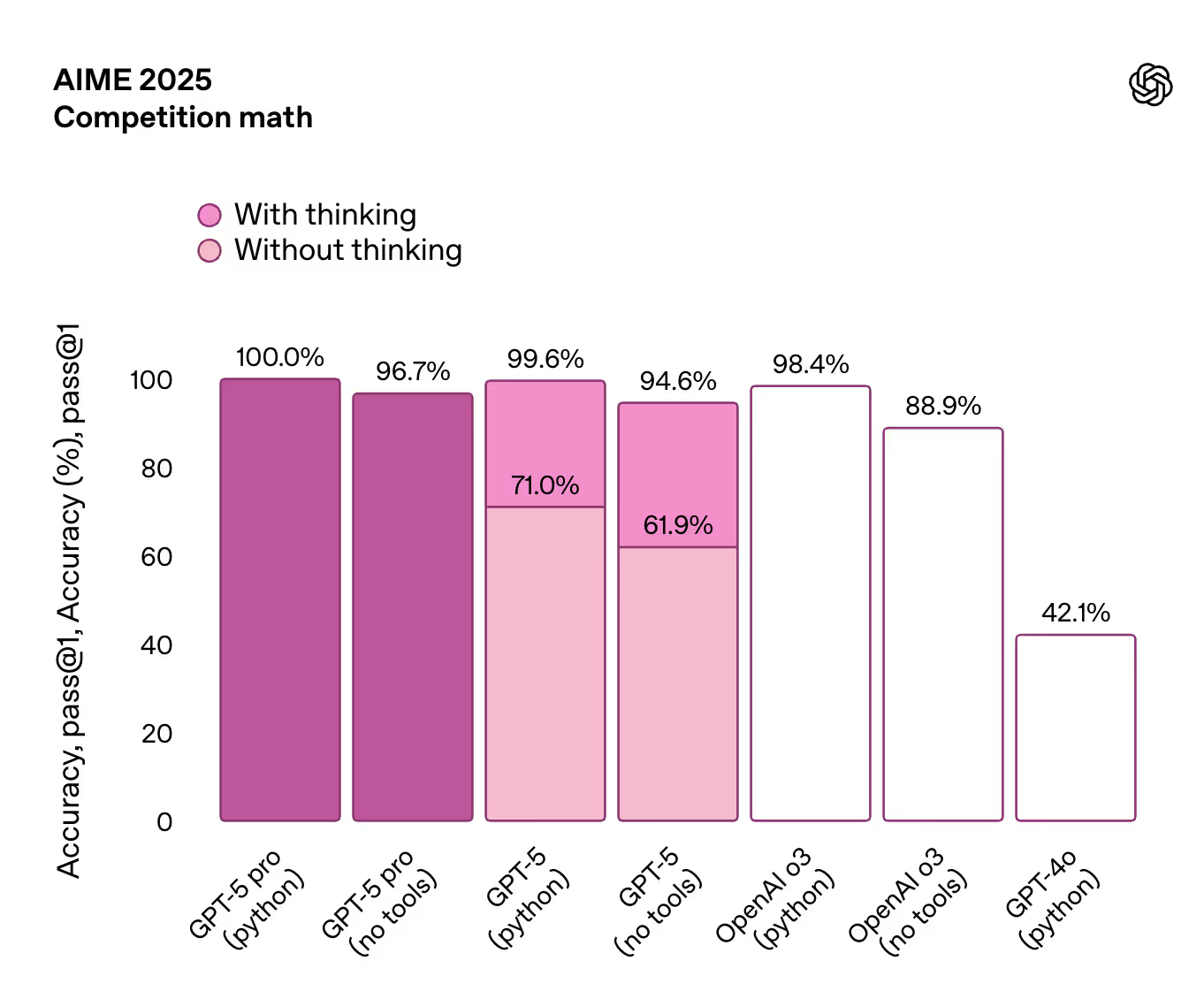Is GPT-5 Pro the most powerful LLM right now?

OpenAI’s GPT-5 Pro landed with a splash: touted as the company’s “smartest and most precise” variant of GPT-5, it promises step-changes in reasoning, coding, and multimodal capability, and it’s already showing top marks on a range of public benchmarks. But “most powerful” depends on how you measure power — raw benchmark scores, real-world usefulness, multimodal breadth, latency and cost, or the availability of tool-enabled pipelines. This article walks through what GPT-5 Pro is, how it performs, how much it costs, how to access and use it, and whether it truly deserves the crown.
What is GPT-5 Pro?
GPT-5 Pro is a commercially available, compute-intensive tier of OpenAI’s GPT-5 family. OpenAI positions it as the highest-fidelity configuration of GPT-5 — optimized for accuracy, instruction following, and complex problem solving — and offers it alongside lighter, cheaper GPT-5 variants for different workloads. The company emphasizes improvements in hallucination reduction, instruction following, and real-world utility (writing, coding, and health tasks).
Key technical/feature claims
GPT-5 Pro as the “smartest and most precise” model in the GPT-5 lineup. In practical terms, that usually means:
- Larger effective compute budget per request (more internal thinking cycles / higher temperature-control fidelity).
- Better integration with tool chains (Python execution, file tools, browsing, and potentially agent frameworks).
- Higher accuracy on reasoning and coding benchmarks, particularly when tool use (e.g., Python execution for math) is enabled.
The practical distinction: Pro vs. public / standard GPT-5
“Pro” is more than a label: it’s a configuration that consumes more compute per token (higher effective context processing, more internal passes or wider layers in deployment), and is priced accordingly in API tiers. That means Pro will generally deliver higher accuracy on long-form reasoning and code generation tasks where additional compute reduces logical and semantic errors. OpenAI’s API pricing pages explicitly list GPT-5 Pro as the premium, most-precise model in the lineup.
GPT-5 is distributed as multiple variants (regular, mini, nano) with selectable reasoning modes (e.g., minimal, low, medium, high, and product modes like “Thinking”). The Pro variant applies the higher reasoning settings and prioritizes computational resources to deliver stronger outputs for complex tasks (longer chain-of-thought, deeper code synthesis, harder math). In practice, that means better multi-step planning, fewer timeout failures on long jobs, and higher accuracy on benchmarks that measure expert-level reasoning.
How much better is GPT-5 Pro at reasoning and coding?
What the benchmarks show
Across recent community and leaderboard evaluations, GPT-5 (and its Pro/Thinking variants) often ranks near the top on many academic and professional benchmarks — MMLU/MMLU-Pro, coding challenges, math/problem solving, and multimodal reasoning tests — but it isn’t always the single leader on every leaderboard. Independent trackers and benchmark aggregators show GPT-5 highly competitive or top-tier performance; some specialized models (for instance, Claude Opus variants on certain leaderboards) sometimes outscore GPT-5 on particular tasks, and performance can vary by prompt, temperature, or whether tool-use (Python, code execution) is enabled.

MMLU, PhD-level science, and coding
- On MMLU-style academic tests and MMLU-Pro leaderboards, GPT-5 variants put up very strong numbers (often high-80s percent on broad academic suites in community results), typically outperforming previous OpenAI models and many competitors on aggregate metrics.
- On demanding coding/math challenges (AIME, LiveCodeBench, etc.), GPT-5 Pro with tools (Python execution) significantly narrows the gap to human-level correct outputs and in some public tests achieves near-perfect performance on specific contest problems when allowed to run code.
Benchmarks (summary numbers)
- Science / PhD-level QA: GPT-5 family shows high 80s (%) accuracy on specialized GPQA variants; Pro is slightly higher.
- Competitive math (AIME / HMMT style): reported scores jump from the 70s (older models) to the mid-90s for GPT-5 in some public reports.
- Coding (SWE-bench): GPT-5 reports materially higher verified problem solving and end-to-end code generation quality versus GPT-4o/o3.
Takeaway: on benchmarks that stress multi-step reasoning, algebraic manipulation, and software design, GPT-5 Pro is clearly ahead. Benchmarks are not reality in full, but they are aligned with the model’s design tradeoffs: more compute → better chain-of-thought outcomes.

Real-world coding and reasoning behavior
Benchmarks correlate with practical differences you’ll notice day-to-day:
- More coherent multi-file code scaffolding and fewer trivial logic bugs on first draft.
- Stronger stepwise problem solving (explain → plan → implement) when “thinking” modes are enabled.
- Better adherence to strict instructions (e.g., API contracts, security constraints) where older models sometimes drifted.
These improvements reduce iteration time for engineers and researchers, but they do not eliminate the need for human review—especially for security-sensitive code and mathematical proofs.
How does GPT-5 Pro compare to other top LLMs — is it the most powerful?
How to define “most powerful”
To judge “most powerful” you must pick a yardstick. Possible axes:
- Raw academic/benchmark performance (math, reasoning, coding)
- Multimodal capability (text, images, audio, video)
- Practical usefulness (ability to integrate with tools, agents, and real apps)
- Cost / latency tradeoffs (how costly is peak performance)
- Safety, alignment, and reliability (low hallucination, safe outputs)
GPT-5 Pro scores highly on the first three axes in many published comparisons, but it’s expensive to run and sometimes outperformed on specific tasks by more specialized or differently configured models.
Where GPT-5 Pro typically wins
- Complex, multi-step reasoning (when you use Pro/Thinking modes or chain-of-thought prompts).
- Long-context synthesis and document analysis (thanks to the huge context window).
- Product integration & tooling — OpenAI’s ecosystem (ChatGPT, Assistants, plugins, Codex/Codex-style coding agents and enterprise connectors) gives GPT-5 practical advantages for building production apps quickly.
Where competitors may be preferable
- Cost-sensitive, high-throughput use — cheaper models or smaller variants often give better cost per token or per correct output.
- Open-weight, offline use or extreme customization — open models and on-prem variants can be tuned or deployed where vendor lock-in or data residency matters.
- Niche benchmarks — some models may beat GPT-5 on specific tasks (e.g., certain coding tasks or specialty language tasks) per some leaderboard snapshots.
Bottom line: GPT-5 Pro is among the most powerful, versatile, and production-ready LLMs right now, but “the most powerful” is workload-dependent.
What does GPT-5 Pro cost?
API and ChatGPT pricing summary
OpenAI has published tiered pricing for the GPT-5 family. Commonly referenced official numbers for the flagship GPT-5 (non-Pro) are roughly in the range of $1.25 input / $10 output per 1M tokens, while GPT-5 mini/nano are cheaper per token for high-volume, low-complexity tasks. GPT-5 Pro — the highest-compute option — is priced substantially higher, reflecting its compute intensity and enterprise positioning; GPT-5 Pro is in the range of $15 input / $120 output per 1M tokens. For exact, current per-token figures and billing options check OpenAI’s pricing page and the platform docs because OpenAI runs multiple variants and occasionally changes pricing.
20% discount on openAI on the third-party platform CometAPI:$12 input / $96 output per 1M tokens.
ChatGPT tiers and Pro access
Access inside ChatGPT is tied to user subscription tiers: free, Plus ($20/month historically), and Pro/Business/Enterprise tiers. Historically OpenAI has reserved the most compute-heavy “Pro” variants and “Thinking” high-reasoning modes for paid tiers (including a $200/month ChatGPT Pro tier in earlier offerings), and similar gating appears for GPT-5 Pro access in the ChatGPT interface. If you need regular, interactive access to Pro mode inside ChatGPT, the paid Pro/Business tier is usually required; if you need programmatic access at scale, the API (pay-per-token) is the route.
Cost tradeoffs to consider
- Accuracy vs cost: Pro reduces the number of retries and manual verification by delivering more accurate outputs, which can make it cost-effective despite higher per-token price for high-value tasks.
- Tool runs increase costs: When GPT-5 Pro uses external tools (Python execution, retrieval) you may incur compute or API costs on those systems in addition to token charges.
How can you access GPT-5 Pro (ChatGPT, API, and other routes)?
ChatGPT web/app (interactive)
OpenAI exposes GPT-5 and Pro/Thinking variants inside the ChatGPT product. Paid tiers (Plus, Pro, Business) provide model picker access and higher usage caps; Pro and Business tiers typically get access to the Pro/Thinking versions. The ChatGPT settings let you choose Standard/Auto/Fast/Thinking modes and, for Pro subscribers, additional “heavy thinking” options.
API (programmatic)
If you want programmatic access or to embed GPT-5 Pro into products, use the API. OpenAI,CometAPI etc includes model names for the GPT-5 family (gpt-5-pro / gpt-5-pro-2025-10-06) and billing is per tokens used. The API enables advanced features like tool-enabled execution, longer context windows, streaming responses, and model parameters to control reasoning effort/verbosity.
CometAPI is a unified API platform that aggregates over 500 AI models from leading providers—such as OpenAI’s GPT series, Google’s Gemini, Anthropic’s Claude, Midjourney, Suno, and more—into a single, developer-friendly interface. By offering consistent authentication, request formatting, and response handling, CometAPI dramatically simplifies the integration of AI capabilities into your applications. Whether you’re building chatbots, image generators, music composers, or data‐driven analytics pipelines, CometAPI lets you iterate faster, control costs, and remain vendor-agnostic—all while tapping into the latest breakthroughs across the AI ecosystem.
Developers can access GPT-5 Pro through CometAPI, the latest model version is always updated with the official website. To begin, explore the model’s capabilities in the Playground and consult the API guide for detailed instructions. Before accessing, please make sure you have logged in to CometAPI and obtained the API key. CometAPI offer a price far lower than the official price to help you integrate.
Ready to Go?→ Sign up for CometAPI today !
How should you use GPT-5 Pro to get the best results?
Prompting strategies
- Be explicit and structured. State the goal, constraints, desired output format, and evaluation criteria. Pro models respond strongly to clear, structured prompts (e.g., “Produce a 500-word report with bullet summary, 3 citations, and a code snippet that demonstrates X”).
- Use few-shot or chain-of-thought when helpful. For complex reasoning, provide examples and, when supported, invoke “thinking” modes or chain-of-thought style prompts to improve internal reasoning coherence.
Use tools when appropriate
Enable code execution/Python tools for numeric, symbolic, or reproducible tasks (scientific computation, data analysis, code generation and validation). Benchmarks show Pro plus tools dramatically reduce errors on complex problems.
Combine retrieval with the model (RAG) for up-to-date, sourceable answers: run a retrieval step against your own documents and feed the retrieved context to GPT-5 Pro rather than relying on the model’s memorized knowledge.
Guard performance and costs in production
- Use sampling controls (temperature, top-p) and max-tokens conservatively for deterministic outputs.
- Cache results for identical prompts and use cheaper variants for background tasks (e.g., nano/mini) while reserving Pro for final answers or critical steps.
- Monitor token usage and set budget alerts (API dashboards + business rules) — Pro can be expensive if not controlled.
Large documents and long context
Leverage the huge context window: feed long documents, but still chunk and index big corpora with RAG (retrieval-augmented generation) when real-time lookup or up-to-date facts are needed. GPT-5 Pro’s long-context abilities let you keep entire conversation histories or multiple documents visible in a single call—very useful for legal, scientific, or code review tasks.
Conclusion: Is GPT-5 Pro the most powerful LLM right now?
It depends on how you define “powerful.” In raw capability across many general-purpose tasks — long-context reasoning, multimodal understanding, and productized tooling — GPT-5 Pro is one of the strongest options available and leads many public benchmarks and real-world use cases. However:
- Competitors may outperform GPT-5 Pro on specific benchmarks, certain cost-per-correct-answer metrics, or in niche domains.
- The total value depends on access model, price, latency, and the engineering investment you’re willing to make (prompting, tool integration, retrieval pipelines).
If you need research-grade accuracy, large-document reasoning, and deep integration with tools, GPT-5 Pro should be treated as a first choice to evaluate. If you need extreme cost efficiency, local deployment, or a highly specialized model, compare alternatives and benchmark on your workload.


